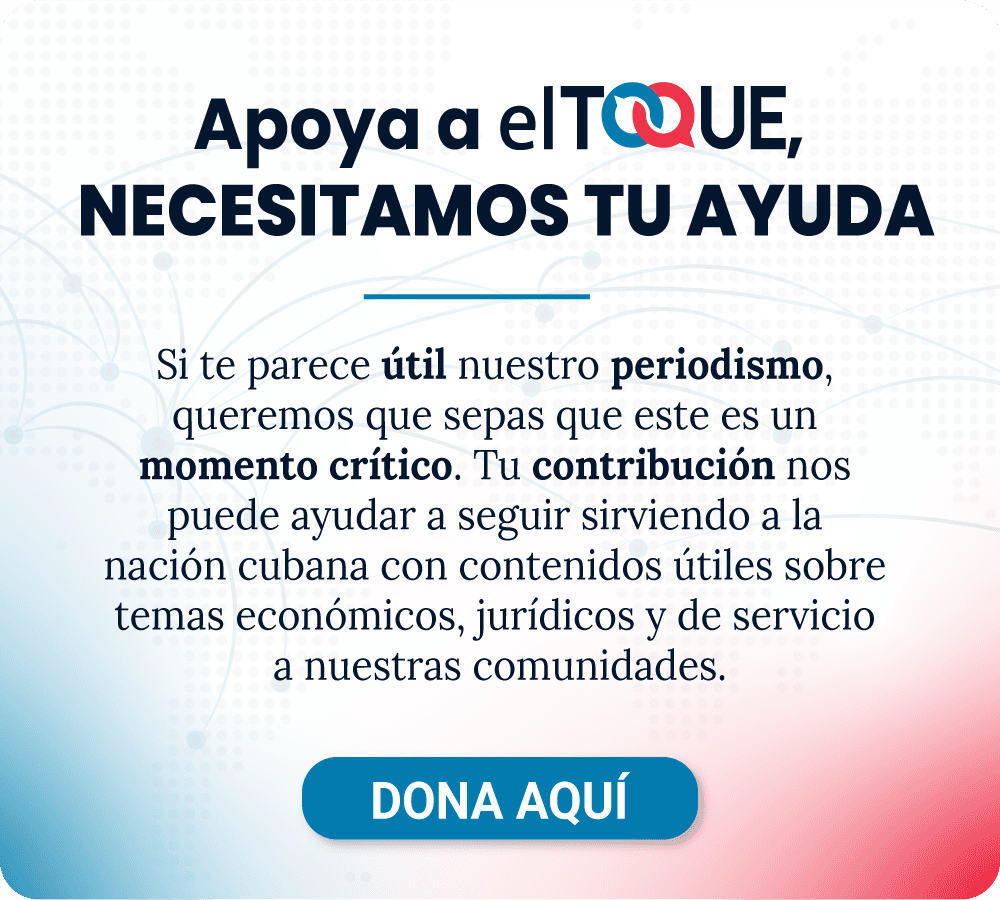eSIM in Cuba: A Growing Workaround for Internet Access?

Photo: elTOQUE
On June 30, 2025, it will be one month since Cuba’s sole telecom provider, Etecsa, implemented a major price hike for mobile data. Since then, Cubans have been seeking alternative ways to connect. One solution that’s begun circulating—quietly but steadily—is the eSIM, or embedded SIM card.
What is an eSIM—and who’s using it?
An eSIM is a digital version of the traditional SIM card used to connect your phone to a carrier network. Rather than inserting a physical chip, the eSIM is built into the device, and your carrier information (like your phone number and data plan) is downloaded remotely via a digital profile.
Travelers are among the primary users of eSIMs. With just a few clicks, they can purchase and activate local data plans—often much cheaper than roaming. (Roaming allows mobile access abroad, but at typically high costs.) eSIMs also appeal to those wanting to maintain two active lines—personal and professional—on a single phone.
The mobile industry is moving away from physical SIM cards. Apple, for instance, stopped including SIM trays in U.S. models starting with the iPhone 14, making those devices compatible only with eSIMs.
Can you get an eSIM from Etecsa?
Not directly. Cuba’s telecom monopoly, Etecsa, doesn’t offer eSIM services. However, international companies such as Yesim, Kolet, and GigSky do provide eSIM-based data plans that operate via roaming partnerships with Cubacel—the only mobile network authorized in Cuba.
Interest in eSIMs has grown in recent weeks among Cubans on the island. Since early June 2025, tech influencers and digital media outlets have begun sharing how-to guides and connectivity tips, helping others get started with the service.
How do eSIMs work in Cuba?
According to travelers and early adopters, performance varies depending on the provider. All eSIM services in Cuba rely on Cubacel’s infrastructure.
Globally, eSIMs use existing mobile networks to provide data access. In Cuba, they do the same—but with one key difference. According to tech YouTuber Osvaldo González Mahia, better known as Cacharratech, eSIM connections in Cuba avoid routing through the government’s “nauta” APN (Access Point Name), which is where censorship and content filtering typically occur. This creates a more direct and uncensored connection.
In a video posted in early June, González Mahia demonstrated that he was able to access apps normally blocked in Cuba, like TikTok. Others interviewed by elTOQUE confirmed access to services such as PayPal, which are also restricted within the country. These findings have led to speculation that Etecsa may be quietly permitting this form of “premium” connection in order to earn revenue in hard currency.
How much does it cost?
Until recently, Suena Cuba—a platform widely used for sending mobile credit to Cuba—offered 1GB data packs valid for seven days at $9.99 USD. The site promoted eSIM use, noting that travelers could install them remotely and go online as soon as they landed in Havana, avoiding long waits at Etecsa offices. That plan now appears to be unavailable due to “out of stock” status.
Currently, GigSky offers the broadest range of options, including unlimited data plans. As of June 24, 2025, a 30-day unlimited data plan costs $67.49 USD. While this is GigSky’s most expensive option, it may be the best fit for heavy users or remote workers. More affordable, fixed-data packages are also available.
All providers make it clear: eSIMs are for data only—they do not offer a phone number or access to SMS and voice services.
What’s the experience like for Cubans?
At first glance, the cost is steep. But for those who rely on the internet for work, it may be a necessary expense. Based on user accounts collected by elTOQUE, some say the connection is fast and more stable than Etecsa’s standard mobile internet. Others, however, report similar speeds to what they’ve always experienced.
Because eSIMs depend on the same Cubacel infrastructure, they are still vulnerable to outages, blackouts, or signal congestion.
A Cuban software engineer, who requested anonymity, suggested one possible explanation for the inconsistent speeds: international top-ups. According to him, users who do not receive these foreign credits may be subjected to bandwidth restrictions, while those who do enjoy full-speed access.
How do you set up an eSIM in Cuba?
To use an eSIM via GigSky, here’s what the process looks like, based on Cacharratech’s walkthrough:
- Download the GigSky app to your phone.
- Enter your email address.
- Select Cuba as your destination.
- Scan the QR code sent to your email (or input it manually).
- Complete payment using a credit or debit card.
This final step—requiring international payment—is one of the major barriers to widespread adoption in Cuba. However, GigSky does currently offer a free trial plan with 100MB of data that requires no payment information. That said, some users have reported issues accessing the trial, and other providers that once offered free trials have since discontinued them.
“It’s only worth it if your work pays for it,” one user told elTOQUE. “Otherwise, it’s really expensive.”
Another challenge is device compatibility. Not all phones support eSIM technology. To get around this, some Cubans have come up with creative workarounds—using an eSIM-enabled phone as a mobile hotspot and sharing the internet connection with others nearby.
The bigger picture: Internet access under control
Beyond pricing and speed, internet access in Cuba is deeply shaped by state surveillance and censorship. The government routinely blocks access to independent media and human rights websites.
In moments of political tension—such as the July 11, 2021 protests—authorities have even cut access to platforms like WhatsApp and Telegram to prevent organization and information sharing.
Against this backdrop, eSIMs offer Cubans a rare, if fragile, window into a freer and more open digital world. For now, they remain a niche tool—valuable for some, inaccessible for many, and subject to the same infrastructure and political pressures as every other connection on the island.











Comments
We moderate comments on this site. If you want to know more details, read our Privacy Policy
Your email address will not be published. Mandatory fields are marked with *